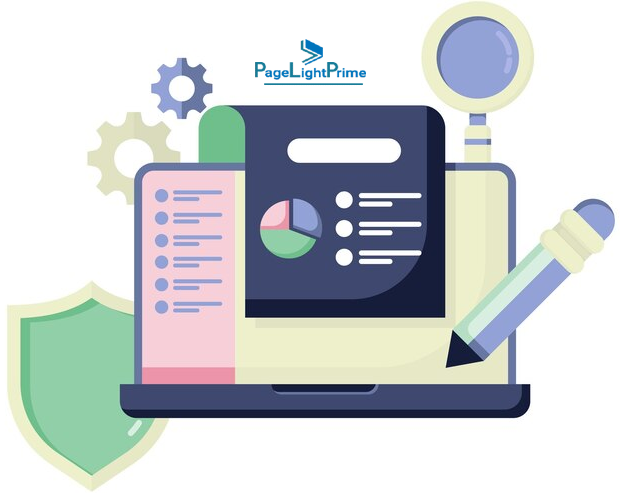Top 6 Benefits of Implementing Document Automation in Your Law Firm
In the dynamic landscape of the legal industry, staying ahead requires law firms to adopt cutting-edge technologies that elevate efficiency and operational excellence. Document automation stands out as a game-changing innovation that has gained considerable traction in recent years. By seamlessly integrating document automation tools into their workflows, law firms can unlock a myriad of benefits, ultimately leading to increased productivity and heightened client satisfaction. In this blog post, we will delve into the top 6 advantages that law firms can accrue by embracing document automation.
Written by Knowledge Team, posted on February 07, 2024

Understanding Document Automation
Before delving into the myriad advantages, let’s demystify what law firm document automation entails. At its core, document automation is a cutting-edge technological solution designed to streamline and optimize the creation of legal documents within a law firm. This innovative system operates by utilizing predefined templates, rules, and standardized language to automate the generation of diverse legal documents, such as contracts, agreements, and court filings. The fundamental aim is to replace time-consuming manual processes with efficient, error-free automation. By embracing document automation tools, law firms empower their professionals to focus on strategic aspects of their work, promoting accuracy, consistency, and a significant reduction in the time spent on routine tasks. With this foundation in mind, we can now explore the top 6 benefits that law firms stand to gain through the integration of document automation into their daily operations.
Now that we’ve laid the groundwork for understanding document automation, let’s navigate through the transformative advantages that await law firms embracing this technological evolution. These benefits not only redefine how legal professionals approach their daily tasks but also pave the way for a more streamlined and client-centric legal practice. Let’s explore the top 6 benefits of integrating document automation into the core operations of a law firm.
Time Savings
In the demanding world of law, time is of the essence. Attorneys often find themselves immersed in routine and repetitive tasks, such as drafting standard contracts, agreements, and legal documents. Document automation becomes the key to unlocking significant time savings. By creating templates for these documents, legal professionals can generate accurate and customized drafts in a fraction of the time it would take to create them manually. This liberation from mundane tasks allows legal professionals to redirect their time and energy towards more intricate and strategic aspects of their cases, ultimately fostering a more efficient and focused work environment.

Reduced Errors and Improved Accuracy
The legal field is unforgiving when it comes to errors. Manual document creation is inherently prone to human mistakes, which can have severe consequences. Document automation tools act as a safeguard by significantly reducing the likelihood of errors. Through predefined templates and standardized language, legal professionals can minimize the risk of typographical mistakes, omissions, and other inaccuracies. This not only enhances the quality of the documents but also mitigates potential legal ramifications that may arise from errors in contracts or legal agreements.

Enhanced Collaboration and Consistency
Collaboration is at the heart of a successful law firm, but it often comes with challenges related to version control and consistency. Document automation tools provide a centralized platform where legal professionals can collaborate in real-time, ensuring everyone is working with the latest and most accurate version of a document. This collaborative approach not only improves communication within the firm but also promotes consistency in the language and formatting of legal documents. The result is a unified and professional image that enhances the firm’s credibility and client trust.

Increased Productivity and Scalability
Document automation isn’t just about saving time; it’s about empowering law firms to handle a larger volume of work without compromising quality. As the efficiency of document creation and management improves, legal professionals can take on more cases and clients, leading to increased productivity. Document automation tools are inherently scalable, allowing law firms to adapt to changing workloads and seamlessly integrate new team members. This scalability is especially crucial for law firms experiencing growth, ensuring the organization can handle increased demand without sacrificing efficiency or the quality of work delivered.

Cost Savings and Improved Client Satisfaction
Implementing document automation not only saves time but also translates into significant cost savings for law firms. By automating repetitive tasks, firms can reduce the need for excessive manual labor, ultimately lowering operational costs. Furthermore, the improved efficiency and accuracy provided by document automation contribute to a higher level of client satisfaction. Clients benefit from faster turnaround times, error-free documents, and a more transparent and streamlined legal process. Satisfied clients are more likely to provide positive reviews, referrals, and repeat business, contributing to the long-term success of the law firm.

Compliance Assurance
In the highly regulated legal environment, adherence to compliance standards is paramount. Document automation plays a crucial role in ensuring that all legal documents created meet the necessary regulatory requirements. By utilizing predefined templates with up-to-date legal clauses and standards, law firms can significantly reduce the risk of non-compliance. This not only safeguards the firm from potential legal repercussions but also instills confidence in clients, demonstrating a commitment to the highest standards of legal practice. Document automation tools can be customized to incorporate changes in regulations swiftly, providing a proactive approach to compliance management. As a result, law firms adopting document automation not only streamline their processes but also fortify their position in maintaining compliance with evolving legal standards.

Conclusion
Incorporating document automation into the daily operations of a law firm is not just a strategic decision but a transformative one. The numerous benefits, from saving time and reducing errors to enhancing collaboration and increasing client satisfaction, make the advantages clear. As the legal industry continues to evolve, embracing innovative technologies like document automation becomes not just a choice but a necessity for law firms aiming to stay competitive and deliver exceptional value to their clients.
